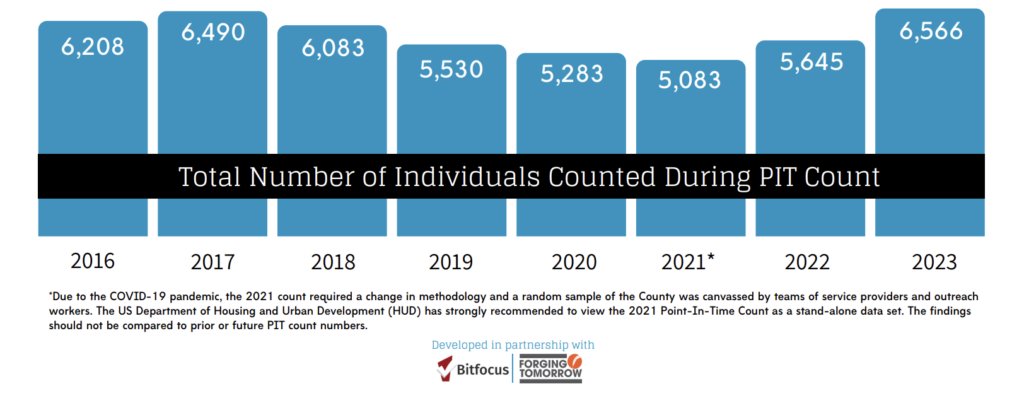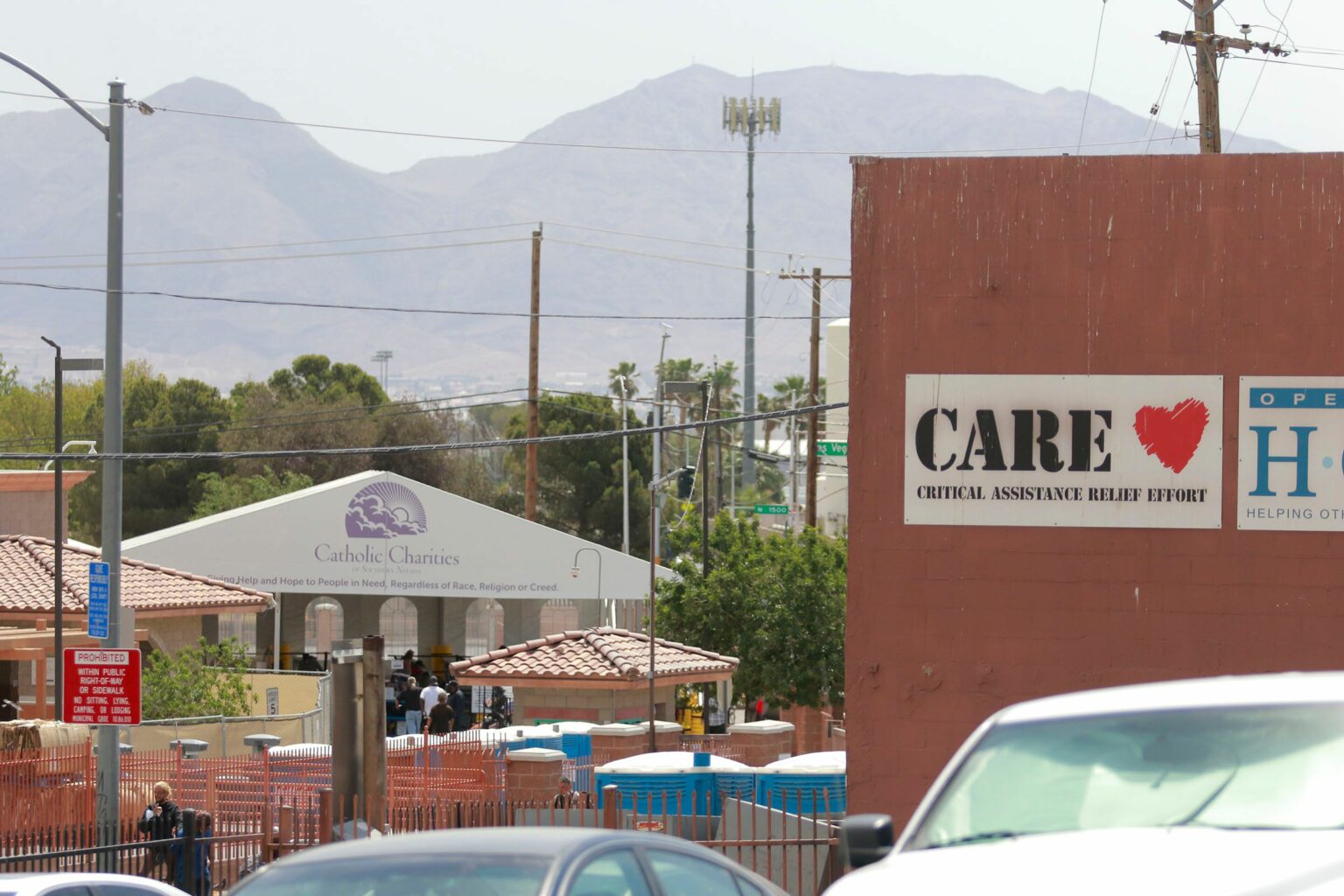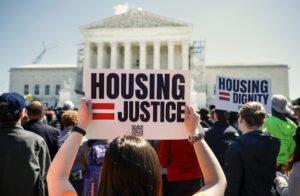Data released Thursday showed Southern Nevada’s rates of homelessness spiked to alarming levels – the largest amount counted in a decade – underscoring the state’s homeless and housing crisis.
The 2023 Point-in-Time Count, an annual snapshot of homelessness on one particular night, counted 6,566 people, a 16% increase from 2022 when 5,645 unhoused people were identified.
Service providers and government officials acknowledge that the annual tally undercounts the true number of people experiencing homelessness.
The count was taken Jan. 25, days after Clark County scaled back its wide scale rental assistance and months before Nevada’s eviction protection expired in early June.

Simply put, the count was conducted during a time when better eviction protections existed and more rental assistance dollars were more widely available.
Overall, the data estimates 16,251 people will experience homelessness at some point in the year. Just a year prior, the estimate was 13,972.
“The release of the Homeless Census Count underscores the ongoing need in our region to address and manage homelessness,” Abigail Frierson, Clark County deputy manager, said in a statement Thursday. “While these numbers capture a moment in time, they reinforce what our social service teams and community partners are dealing with each day as they interface with those who are unhoused and work to connect them with temporary shelter, wraparound services, and eventually permanent shelter.”
Social service providers have repeatedly warned they have been seeing a steep increase in homelessness among families with children.
Thursday’s numbers confirmed those fears and found 794 families, about 12% of the entire homeless population, were among those experiencing homelessness.
The number was a whopping 54% increase over 516 families in 2022.
Data showed in 2011 homelessness rose to 8,003 during the Point-in-Time before dropping to 6,954 in 2013. The number then increased again to 7,443 in 2014 and again to 7,509 in 2015, according to the 2015 Southern Nevada Homeless Census and Survey.
Finally in 2017, when the count was 6,490, the number began to trend downward.
It reached its lowest point in years in 2021 when 5,083 were counted. However, that count was done during the height of the Covid-19 pandemic when the methodology had to be changed to mitigate safety concerns.
When speaking to the press in August, Clark County Manager Kevin Schiller cited rising rents as the reason the valley is seeing more people – and more families in particular – enter into homelessness.
In the first two years of the pandemic, rents shot up more than 20% on average.
However, Clark County was able to administer rental assistance, known as the CARES Housing Assistance Program or CHAP, to provide unpaid rent for people who fell behind.
Legal groups and housing advocates further warned earlier this year that Nevada’s housing and homeless crisis would only intensify if the state didn’t take adequate measures to keep people housed by expanding eviction and tenant protections.
One piece of legislation passed in 2021, which paused eviction proceedings while rental applications were being processed, sunset in June.
Legislation was passed to extend the protection but Gov. Joe Lombardo vetoed the bill along with several measures to offer tenant protections and stabilize rent for seniors on fixed incomes. The number of evictions granted has started to increase.
State and local officials have proposed different ways to address the unhoused population.
“Clark County has served thousands of people who have experienced homelessness over the past few challenging years, and we will continue to foster innovative solutions to best serve our vulnerable populations,” Frierson, the county’s deputy manager, said in a statement.
The county recently opened a converted Motel 6 into a homeless intake center, an idea it hopes to replicate.
Meanwhile, lawmakers this year passed Assembly Bill 528, which established a $100 million matching fund to build a centralized campus, similar to the Courtyard Resource Homeless Center in the City of Las Vegas, to be a new hub for homeless resources. The bill was supported by the resort industry.
Clark County Commissioner Tick Segerblom, who spearheaded the facility, recently said he’d rather the money go toward converting more motels into intake centers than create another centralized campus.
According to data released Thursday, 3,912 people, or 60% of the unhoused population, were unsheltered. That included 132 counted at the open-air Courtyard Homeless Resource Center.
Of those who are sheltered, 2,229 people were in emergency shelters and 550 were in transitional housing.
The vast majority, 5,745 people, were single adults, and 959 were veterans.
Similar to previous years, the Black population is disproportionately represented in the count.
Southern Nevada’s population is about 42% white and 12% Black. However, the homeless count showed 51% were white and 37% were Black.
Using federal relief dollars, the state and local governments have made sizable investments – the state pledged $500 million to address the housing crisis – to develop affordable housing projects. However, most of the projects won’t be ready for at least another 18 months.
Our stories may be republished online or in print under Creative Commons license CC BY-NC-ND 4.0. We ask that you edit only for style or to shorten, provide proper attribution and link to our website. AP and Getty images may not be republished. Please see our republishing guidelines for use of any other photos and graphics.




